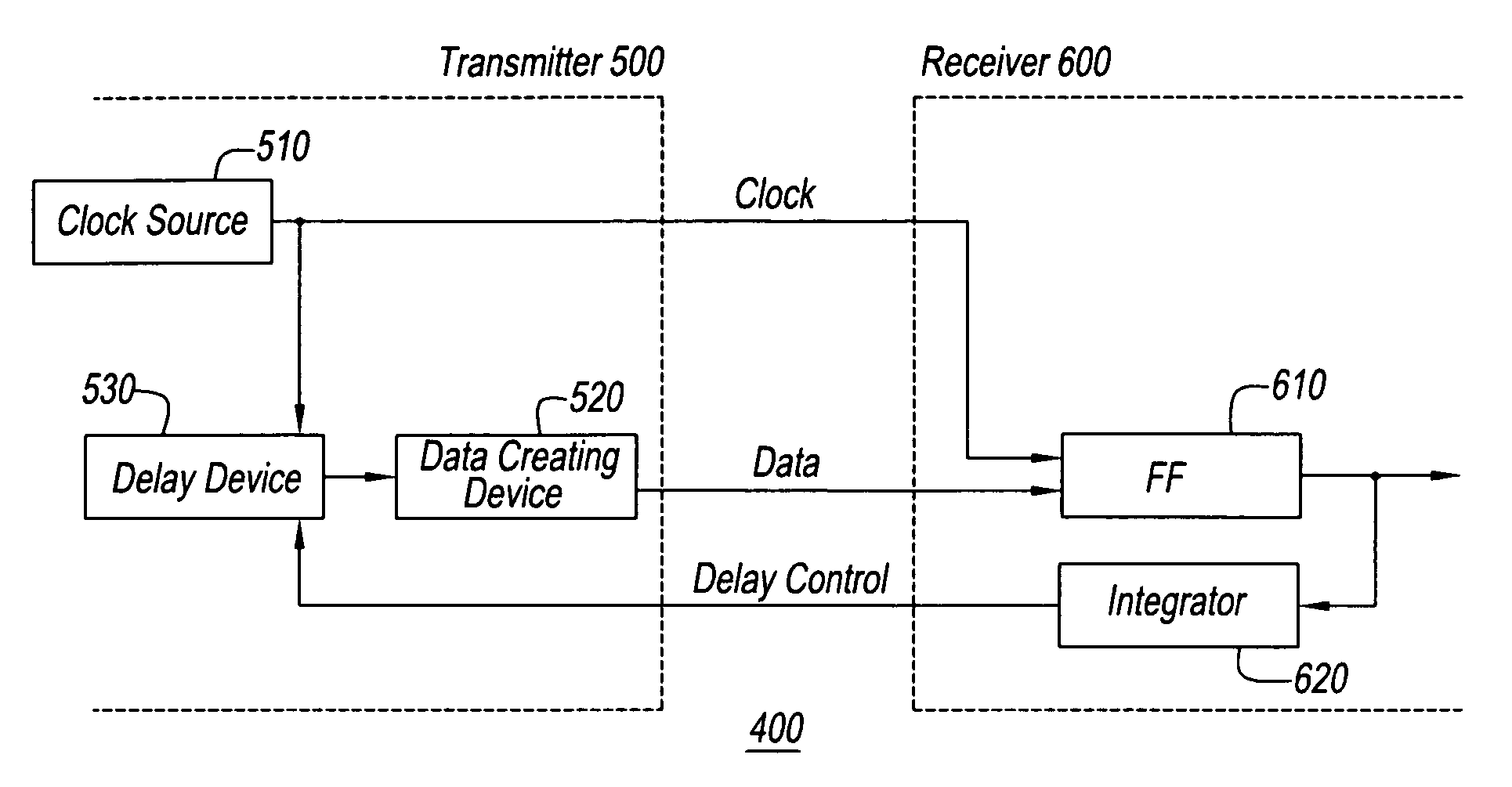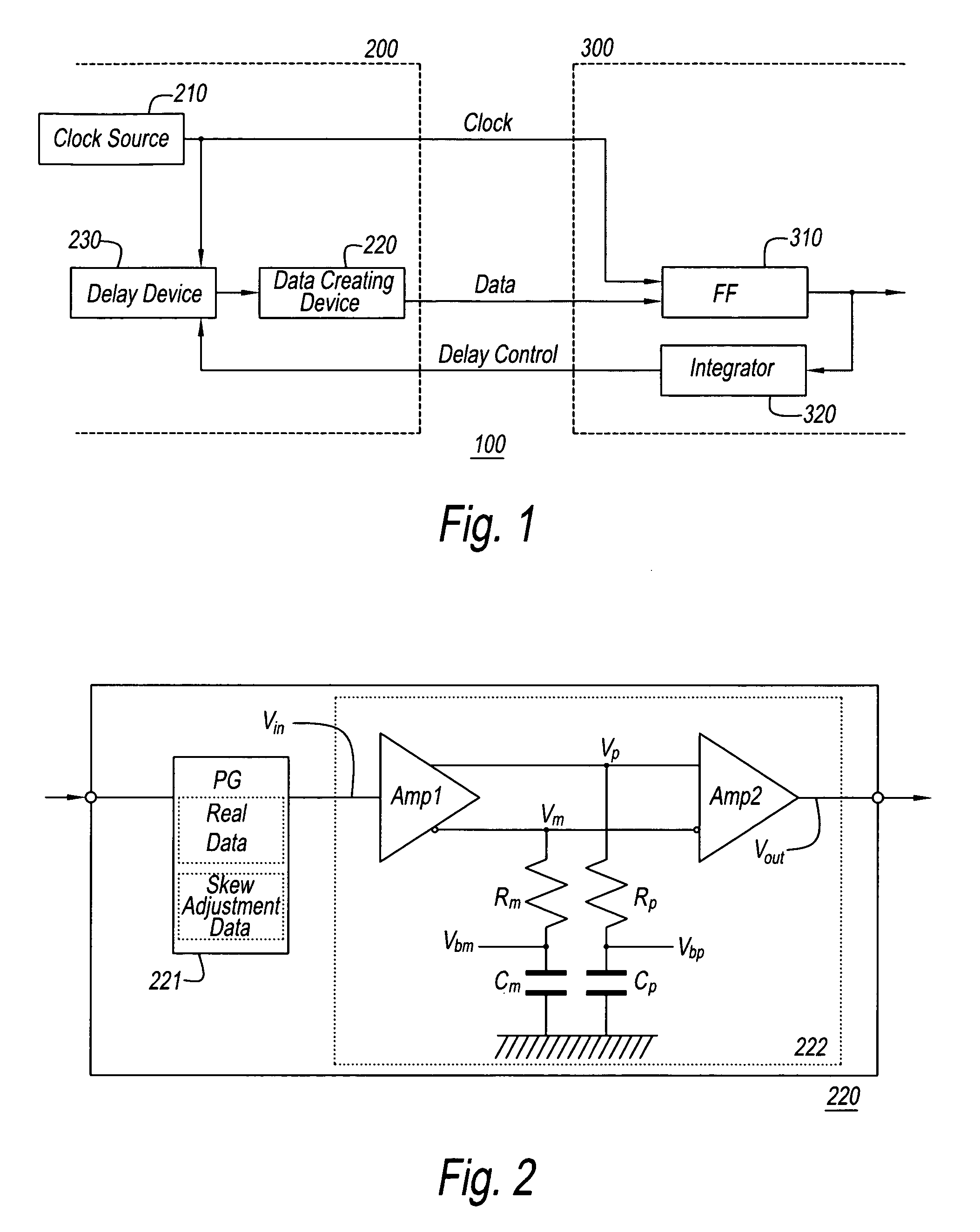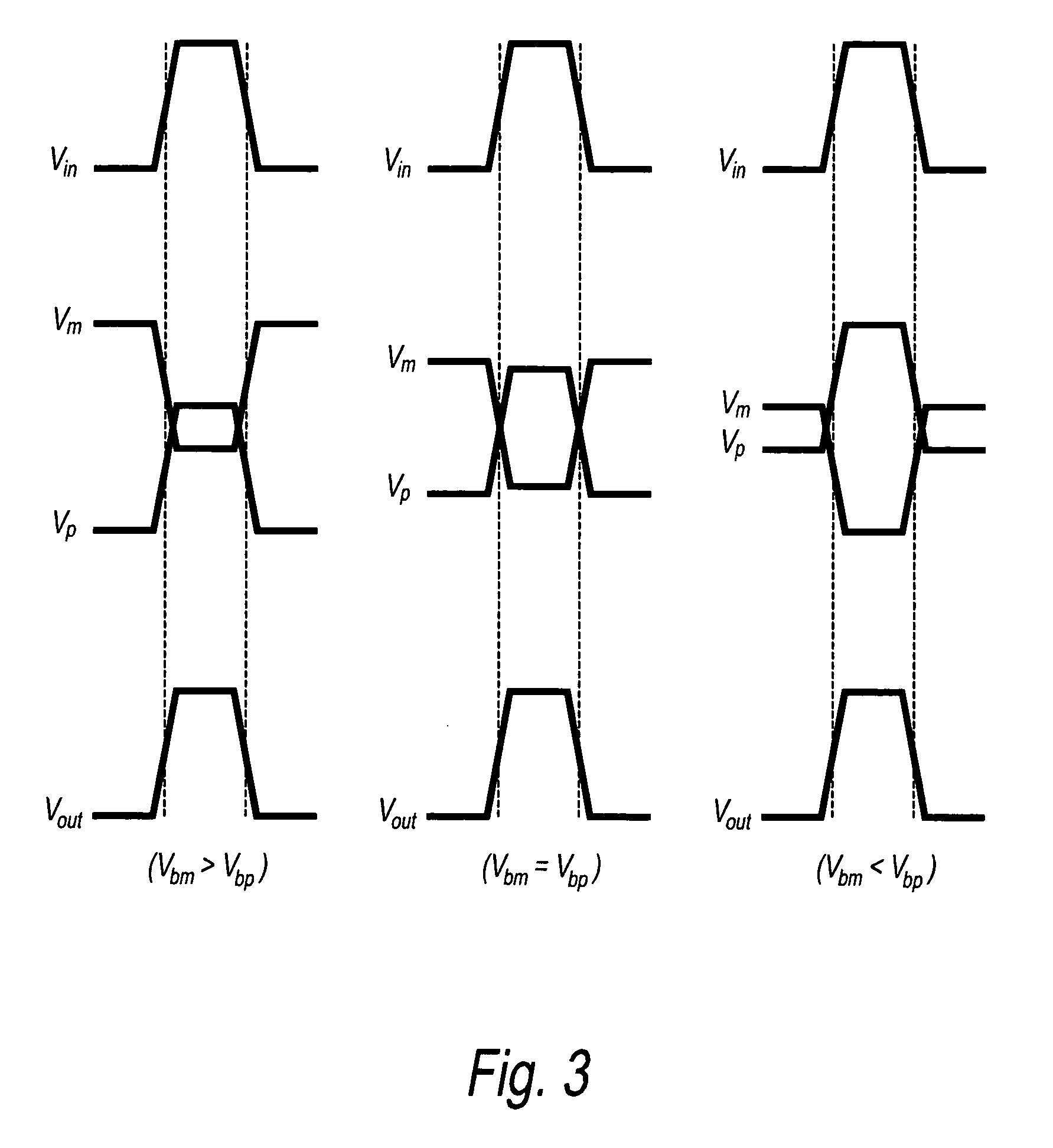Method and apparatus for skew adjustment, data transmission system having skew adjustability
a data transmission system and skew adjustment technology, applied in the field of data transmission systems, can solve problems such as data transmission systems, complex circuits and additional signal lines, data transmission systems, and data transmission systems
- Summary
- Abstract
- Description
- Claims
- Application Information
AI Technical Summary
Problems solved by technology
Method used
Image
Examples
first embodiment
[0035] The present invention will now be described based on preferred embodiments shown in the attached drawings. The first embodiment is a serial data transmission system with which skew adjustment is performed by the method of the present invention. A structural diagram of this system is shown in FIG. 1.
[0036] A serial data transmission system 100 in FIG. 1 comprises a transmitter 200 and a receiver 300.
[0037] Transmitter 200 comprises a clock generator 210, a data generator 220, and a delay device 230. Clock generator 210 is a device that supplies the clock signals to transmitter 200 and the clock signals are transmitted to outside the device. By means of the present embodiment, the clock signals that are supplied by clock generator 210 are rectangular wave signals. Delay device 230 is a device that applies a specific time delay to the inputted signals. It receives the clock signals from clock generator 210, applies time delay to the clock signals, and outputs the delayed signals...
second embodiment
[0051] The skew adjustment method of the second embodiment is described in detail below. The output signals of integrator 320 are shown in FIG. 6 for clarification. Top signal line X represents the output signals of integrator 320 at transmission rate RX. Moreover, bottom signal line Y represents the output signals of integrator 320 at transmission rate RY. It should be noted that transmission rate RX is faster than transmission rate RY. Moreover, T0 is the amount of skew still present between the clock signal and the data signal when the amount of time delay applied by delay device 230 is minimized. T0 is not the delay added intentionally but delay which serial data transmission system 100 adds primitively. T0 is understood to be a representative approximate value and is not understood to be an exact value. The part of signal line X and signal line Y whose level changes with this T0 is shown by the broken line in FIG. 6, while the part where the level changes with the time delay ap...
third embodiment
[0055] By the way, the devices and transmission paths through which signals pass each have unique group delay properties. In general, these group delay properties are properties such that the amount of delay varies with frequency. Consequently, when the frequency distribution of the signals that are input changes from moment to moment, the amount of jitter applied to the signals that pass through the devices and transmission paths is generally high. Real data signals are examples of signals whose frequency distribution changes from moment to moment. On the other hand, the amount of jitter applied to the signals that pass through the devices and transmission paths is generally small when the distribution frequency of the signals that are input is constant. Clock signals and similar signals are examples of signals whose frequency distribution is constant. This applies also to pattern generator 221, waveform adjustment device 222, delay device 230, and similar devices. Consequently, it...
PUM
 Login to View More
Login to View More Abstract
Description
Claims
Application Information
 Login to View More
Login to View More - R&D
- Intellectual Property
- Life Sciences
- Materials
- Tech Scout
- Unparalleled Data Quality
- Higher Quality Content
- 60% Fewer Hallucinations
Browse by: Latest US Patents, China's latest patents, Technical Efficacy Thesaurus, Application Domain, Technology Topic, Popular Technical Reports.
© 2025 PatSnap. All rights reserved.Legal|Privacy policy|Modern Slavery Act Transparency Statement|Sitemap|About US| Contact US: help@patsnap.com



